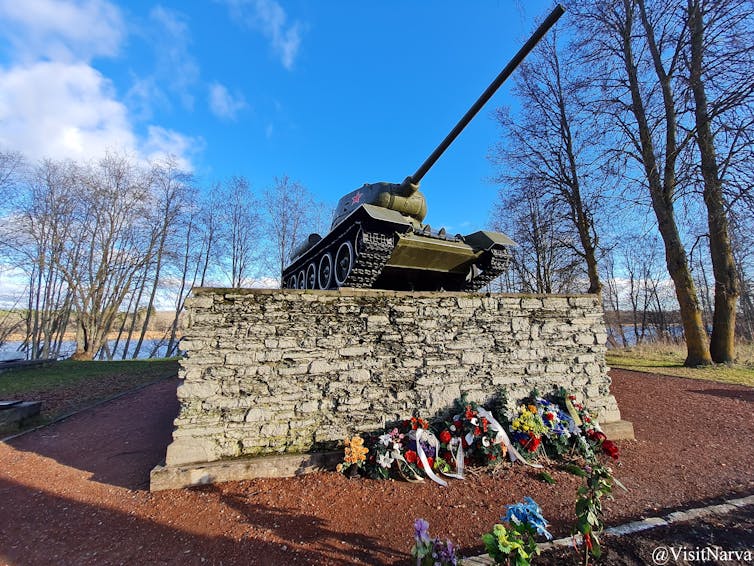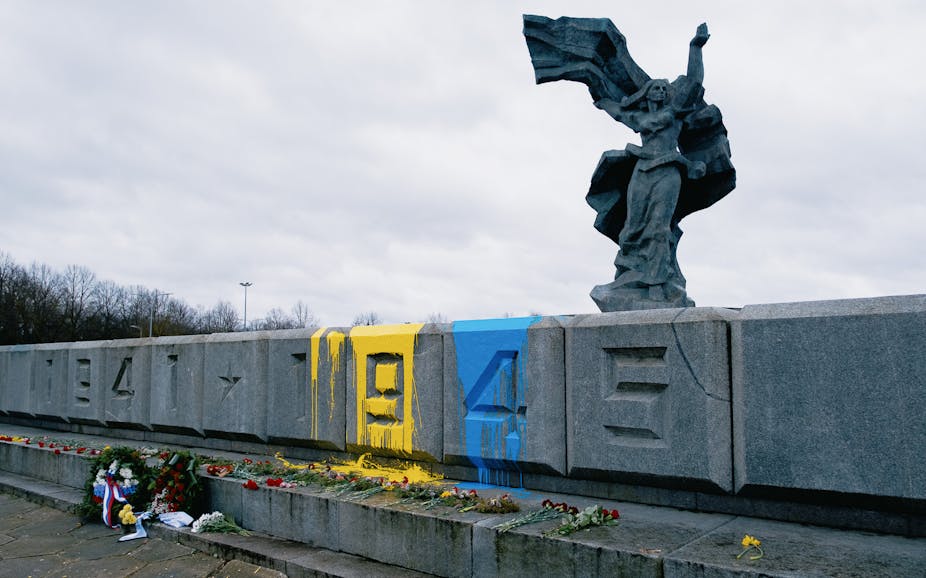Estonia is to remove all of its Soviet-era war monuments, the latest in a line of eastern European countries to go down this path. There are reportedly 200 to 400 Soviet-era memorials or monuments still standing across Estonia.
The prime minister, Kaja Kallas, said these would now be relocated “as quickly as possible”, adding: “It is clear that Russian aggression in Ukraine has torn open the wounds in our society that these communist monuments remind us of and therefore their removal from public space is necessary to avoid additional tensions.”
The move is not without its controversy. The discussed removal of a T-34 tank monument outside the city of Narva near the border with Russia has met with some opposition from the local population, 90% of whom are Russian speakers.
But Kallas stressed that it is not the “right place” for commemorating the dead: “A tank is a murder weapon, it is not a memorial, and these same tanks are killing people on the streets of Ukraine right now.”
Over the past few years, some former Soviet bloc countries have debated the future of their Soviet-era war monuments, many of which celebrate the part played by the Red Army in the second world war and, specifically, the battle against fascism. But – beyond a few notable instances of monuments being removed from countries making the transition from communism to a liberal market economy (Poland springs to mind) – not many war monuments have actually been removed.
Instead they have more often been neglected, defaced or otherwise altered. But now the invasion of Ukraine appears to be prompting countries in eastern Europe and the Baltic states to consider getting rid of the remaining Soviet war monuments altogether.
In the early days and weeks of the invasion, Soviet war monuments made the news as activists and supporters of Ukraine painted some statues in the colours of the national flag as an expression of solidarity – something they have done since the annexation of Crimea in 2014.

As the war extended into the spring and summer months, campaigns to remove the Soviet monuments resurfaced in Lithuania, Latvia and Estonia. All three regained their independence in 1991 and later joined Nato and the EU.
In June, a law on the prohibition of promoting totalitarian and authoritarian regimes and their ideologies – dubbed the “deSovietisation” law – was drafted by the Lithuanian parliament. At the same time, in neighbouring Latvia, the parliament adopted its own similar law. Now Estonia is following suit.
Interestingly, while the focus is on second world war Red Army monuments, there is clear impetus for a debate on the history of the Soviet control of these countries.
Liberation or occupation?
Despite the title of Latvia’s recent law, you’d be hard put to find any kind of monument glorifying the Nazi regime, there or anywhere else in the Baltic states. The key thing here is the equivalence drawn between the Soviet and Nazi regimes as they are remembered.
From the perspective of east European states, the origins of the second world war can be traced back to the secret protocols of the Molotov–Ribbentrop Pact in 1939 which divided Europe into spheres of influence between Nazi Germany and the Soviet Union. As a result, both are considered to bear responsibility for the war that turned much of eastern Europe into what historian Timothy Snyder has referred to as “bloodlands”.
In the recent discussion of the Soviet-era monuments, it is the associated interpretation of the aftermath of the second world war that is at stake. The Soviet war monuments are nothing if not ambiguous, “symbolising liberation, aggression and occupation”. While these monuments refer to the liberation from the Nazi German occupations, the rescue simultaneously brought with it a long period of communist rule, accompanied by the presence of the Soviet Army across eastern Europe.
The removal in Prague of a statue of Ivan Konev in 2020 is a good example of this ambiguity. Konev led the liberation of Prague from the Nazis in 1945, but also contributed to the suppression of the Prague Spring in 1968.

New meaning
The war in Ukraine gave Estonia new impetus and “the moral right to look at the wounds that have not yet healed”, according to the minister of public administration. Soviet war monuments have become a proxy through which to seemingly achieve this task.
Memories of Soviet occupation also became a filter through which the partial occupation of Ukraine by Russian troops is understood. Soviet war monuments are now seen by many as “glorifying Soviet imperialism”, something that now extends to Vladimir Putin’s Russia. They are “Soviet occupation monuments” that now equally stand for what Russia is doing to its neighbouring country.
The linking of Soviet and Nazi regimes in the Latvia’s law is also not accidental. Rather, the removal and relocation of Soviet war monuments is framed within the Baltic and more broadly east European memory of the second world war and that of the 20th century. It appears to be a step towards making this position secure in the background of Vladimir Putin’s misuse of history to justify the war in Ukraine.
While public opinion in Lithuania, Latvia and Estonia is far from uniform, one thing seems to be clear. Against the backdrop of Russian aggression in Ukraine, the removal and relocation of these statues and monuments is not just an expression of solidarity with Ukraine. It’s a way of settling how the history of the Soviet era is to be remembered.
The question is whether these processes will facilitate the healing of the wounds left by the complex 20th-century history of former Soviet bloc countries. Or if they are just as likely to entrench the existing memory fault lines.

